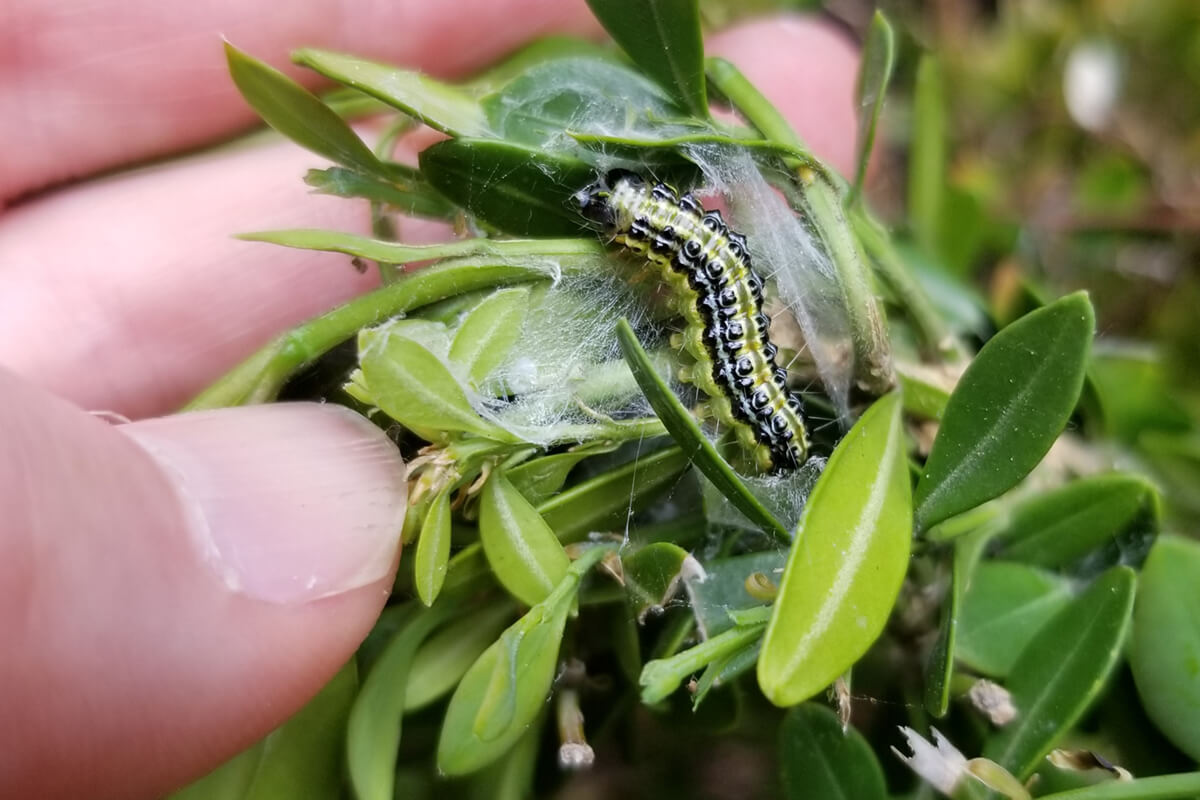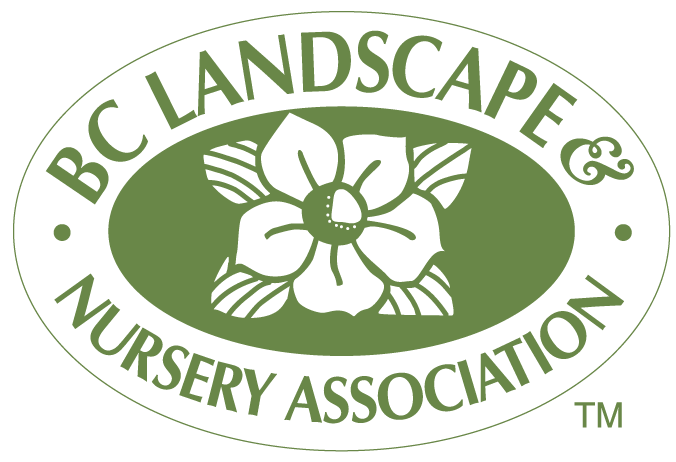Box Tree Moth
Box Tree Moth
cydalima perspectalis
Box tree moth is a serious pest of boxwood (Buxus spp.) that has spread across several provinces in Eastern Canada since its initial detection in Ontario in 2018. The pest poses no risk to human health but can cause complete defoliation of host plants if left unmanaged. It has not been detected in British Columbia.
Box tree moth larvae are identifiable by their light green colour with black and white stripes and a black head, growing up to 4cm long. The adult moth has a wingspan of about 4cm and is typically white with thick dark brown borders. Webbed leaves and defoliation are often the first visible signs of infestation.
This pest spreads primarily through the movement of infested nursery stock and is capable of flying up to 10km per year.

Trade and Market Impact to BC
Boxwood is a high-value crop for BC growers, many of whom export into the United States. In May 2021, the Animal and Plant Health Inspection Service (APHIS), a department of United States Department of Agriculture (USDA), issued a Federal Order restricting the import of Buxus, Ilex, and Euonymus from all of Canada, following a confirmed box tree moth detection in an Ontario shipment. The order has had widespread and lasting impacts on the Canadian nursery trade, as many growers have removed these plants from their offerings.
A 2021 BCLNA survey of BC growers estimated annual sales of these three host plants had been $9.7 million, with 59% ($5.8 million) shipped to US markets. With border access cut off, this was a severe hit to many BC growers as it closed off long-standing sales channels and impacted long-term production plans.
BCLNA's Role and Efforts
BCLNA has worked actively to create and protect BC’s pest-free status and support national coordination around box tree moth issues.
BCLNA initially convened an active Box Tree Moth (BTM) working group of growers when BC was included in the federal order prohibiting boxwood shipments to the United States. Although the border has since reopened, the group continues to operate on an ad hoc basis.
BCLNA plays a key role in coordinating the BC BTM Surveillance Program in collaboration with the BC Task Force, which includes the Ministry of Agriculture and Food, the Invasive Species Council of BC, the Canadian Food Inspection Agency (CFIA), and participating growers. This surveillance was instrumental in enabling CFIA to designate BC as a pest-free area for box tree moth in May 2023. The U.S. border subsequently reopened to BC-grown boxwood in December 2023.
Ongoing surveillance remains critical to maintaining BC’s pest-free status and supporting continued access to U.S. markets. The most recent BTM program directive, issued by CFIA in May 2024, outlines current surveillance and compliance requirements. It is available at:
CFIA RMD-23-05.
At the national level, BCLNA participates in the CNLA National Box Tree Moth Task Force. This group includes boxwood growers from across Canada and works in partnership with CNLA, Landscape Ontario, CFIA, and AmericanHort. The task force continues to:
- Advocate for science-based, harmonized regulatory approaches between Canada and the United States.
- Support Ontario’s ongoing containment efforts.
- Develop long-term strategies to restore market confidence and stability for growers impacted by BTM.
Pest Biology and Identification
Box tree moth follows a multi-stage lifecycle that varies with temperature and location. In Ontario, two adult generations per year have been observed, while European populations can see up to five generations per year.
Eggs: Eggs are laid on the underside of boxwood leaves in clusters of 10–20 and hatch in approximately 3 days. They start off a translucent greenish yellow, with black head capsules becoming visible as they develop.
Larvae: Newly emerged larvae are light green with black and white stripes and a black head. They feed on the underside of leaves, creating distinctive webbing. Mature larvae can grow up to 4 cm long and may develop black dots outlined in white along the body.
Pupae: Pupae are hidden in silken cocoons among the leaves and twigs, measuring 1.5–2 cm long. This stage lasts 1–2 weeks before adults emerge.
Adults: Adult moths have a wingspan of about 4 cm and typically feature white wings bordered in dark brown, though a less common dark (melanistic) variant exists. Adults live for 2–4 weeks and are strong flyers, capable of dispersing 5–10 km per year.
Box tree moth overwinters as a larva in a cocoon among the leaves and can survive winter temperatures as low as -30°C.


